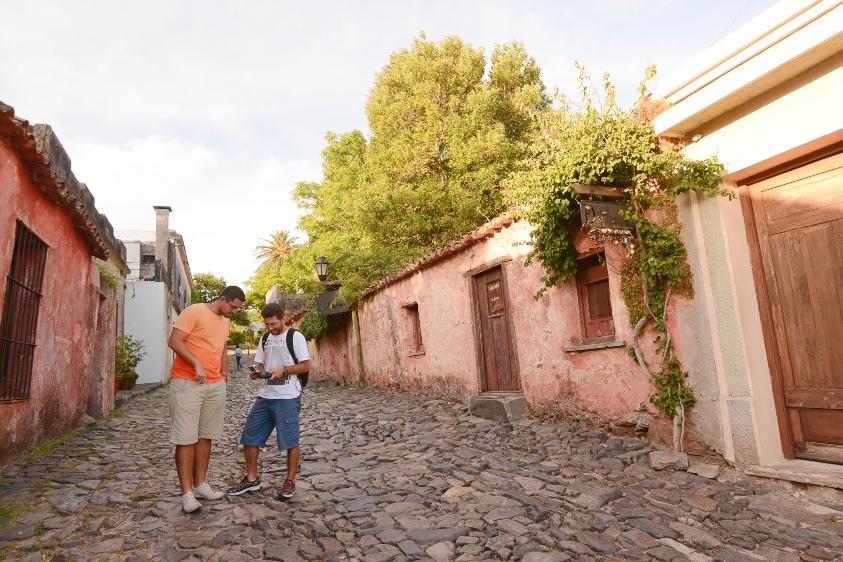Tourism activity will register an increase in the 2022-23 period, as well as in subsequent years, but without repeating the excellent performance of 2017 when the number of visitors reached almost 3.8 million, according to a CERES study.
The slow exit from the COVID-19 pandemic is undoubtedly an obvious reason for the slow recovery of the sector, but the exchange differences between Argentina and Uruguay, as well as the economic crisis of the neighboring country, are the most fundamental explanations.
Tourism in Uruguay is highly dependent on Argentine visitors who, in addition to managing a devalued currency, have registered a strong loss of real wages, the variable with the highest incidence when traveling, according to the study.
An illustrative fact of this, a basis for the decline, is that, in mid-2022, the Argentine economy was at levels similar to those of 2011.
The executive director of CERES, Doctor in Economics Ignacio Munyo, presented the main conclusions of this Special Report during the year-end toast of the Uruguayan Chamber of Tourism.
Based on the research, CERES proposes a set of recommendations with the purpose of propping up a sector that is highly exposed to regional fluctuations: the creation of a unified system of statistics that allows better understanding of tourism performance and as an essential tool for public policies; the installation of a public-private commission to think about the development of the sector and eventual measures that contribute to alleviate exogenous damages; a substantial improvement in air connectivity; the development of other forms of tourism; and a robust digital communication plan to attract visitors from new markets.
Here is a summary of the main findings of the study:
- In 2020, the entry of visitors was the equivalent of 27% of the tourists who arrived in 2017; in 2021, it dropped to 11%; and in the accumulated of this year (January-October), it was located at 47%.
- Of all foreign tourists admitted from 2000 to 2022, 67% were of Argentine nationality.
- The income of Argentine tourists has a downward trend since 2017 as a result of currency devaluations and the fall of the neighboring country’s economy.
- In the last five years, 42% of tourists entered through the international bridges along the coast; 22% for Cologne; 15% through the Carrasco International Airport; 11% came from the border with Brazil; and 10% by other means.
- The drop in visitors who entered through the Carrasco air terminal may be associated with deficiencies in air connectivity and competitiveness problems in the regional comparison.
- Foreign spending in January-October —latest data available— almost tripled the same indicator for the same period in 2021, but it was 8.2% lower than January-October 2019.
- Maldonado is the department that leads the spending of tourists (42.6% of the total); Montevideo follows (32.1%); Cologne (5.6%); Cannelloni (5.4%); and Rocha (4%). The remaining 10.4% groups a group of other departments.
- Tourist spending, according to foreigners or from domestic tourism, shows differences. Gastronomy and lodging are the ones that have the greatest weight among foreigners. Supermarket, meanwhile, is the item with the highest incidence in the spending of national tourists.
- The calculation of the weight of Tourism in the GDP confirms the influence of Argentina in the development of the sector. In 2017 it had a participation of 8% of the total activity; in 2018, 7.5%; and in 2019, 6.4%. The estimates for the next two years reflect the effect of COVID-19: 2.6% (2020) and 1% (2021).
- The economic decline, however, was not reflected in the same way in employment. The jobs of 2021 (about 105 thousand) represent a minor drop in relation to tourist activity.
- Maldonado is the department with the highest incidence in terms of employment (12.9% of the total) followed by Colonia, Rocha, Montevideo and Salto.
- The investigation detected that informality is a problem, in line with the average for the entire economy, standing at 23.4% in 2019.
- 20.9% of the jobs associated with tourism present a very high risk of automation in the short term, although lower in relation to the entire economy (27.6%), according to CERES calculations. From the analysis it emerges that it is a sector that requires a greater proportion of employees with special skills in dealing with clients, as well as emotional support and personal relationships. Being more intensive in human qualities, the propensity for automation is less.







